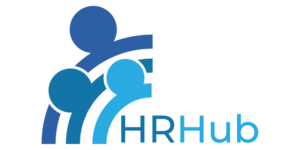The way companies attract, hire, and retain talent is undergoing a seismic shift. By 2025, over 60% of organizations will leverage AI and data-driven insights to optimize recruitment, according to Deloitte’s Human Capital Trends 2024. Traditional hiring is no longer enough. Businesses that embrace innovative talent acquisition strategies gain a significant edge, tapping into top-tier talent before competitors even spot them.
At the same time, employees’ expectations are evolving faster than ever. Today’s professionals want more than competitive pay, they seek flexible benefits, performance-linked rewards, and opportunities to grow. Organizations that blend cutting-edge recruitment practices with modern compensation models don’t just fill positions, they build high-performing, motivated, and loyal teams capable of driving long-term business growth.
1. Evolving Trends in Talent Acquisition
The recruitment landscape is shifting from reactive hiring to proactive talent management. Today’s best-performing companies anticipate talent needs, using data-driven strategies to map skills, identify potential gaps, and plan future hires. Predictive analytics and AI aren’t just buzzwords, they help organizations pinpoint high-potential candidates and reduce costly hiring mistakes.
Additionally, diversity, equity, and inclusion (DEI) are no longer optional, they’re essential. Companies embracing DEI don’t just meet societal expectations; they enhance innovation, employee satisfaction, and employer branding, positioning themselves as destinations for top talent.
2. Modern Strategies for Hiring Top Talent
Attracting exceptional candidates today requires more than job postings. Leading organizations adopt multi-pronged strategies, including:
- Employer Branding: Showcasing culture, values, and purpose to attract candidates who align with the company mission.
- Employee Referrals: Leveraging internal networks to tap into high-quality talent pools.
- Talent Pipelines: Maintaining a ready pool of qualified candidates for immediate or future needs.
- Engagement Campaigns: Personalized outreach to nurture relationships before a position even opens.
These talent acquisition strategies help companies not only hire faster but also create stronger alignment between talent and organizational goals.
3. The Role of Technology in Recruitment
Technology is no longer just a support function, it’s transforming recruitment into a strategic advantage. Tools like AI-driven applicant tracking systems, chatbots, and recruitment analytics platforms enable faster decision-making and a better candidate experience.
Advantages of this approach include:
- Automated Screening: Identifying top candidates in seconds instead of days.
- AI Chatbots: Providing real-time answers and engagement for applicants.
- Recruitment Analytics: Tracking metrics to optimize hiring strategies and measure ROI.
Companies that harness technology don’t just fill positions, they make smarter hires, faster, with less bias and more precision.
4. Employee Expectations and Changing Workforce Dynamics
The modern workforce has shifted dramatically, with Millennials and Gen Z now making up more than 50% of employees globally. These groups prioritize flexibility, purpose-driven work, and growth opportunities, which directly influence retention and engagement. Research by Gallup shows that employees who perceive meaningful work are 2.5 times more likely to stay with their employer, while organizations offering flexible work arrangements see up to 30% higher productivity.
To adapt, organizations are implementing data-driven talent acquisition strategies:
- Flexible Work Policies: Hybrid or remote work options are no longer perks—they are expected. Companies like Microsoft and Salesforce report increased retention and engagement after introducing flexible schedules.
- Clear Career Paths: Structured learning and development programs, skill certifications, and internal mobility opportunities give employees tangible growth avenues. Deloitte research highlights that organizations with defined career paths experience 41% higher engagement.
- Personalized Recruitment Experiences: Tailoring communication and onboarding to individual preferences increases candidate acceptance rates and reduces early attrition. AI-driven tools can help track candidate preferences and optimize messaging.
- Purpose and Culture Alignment: Highlighting company mission, social responsibility initiatives, and DEI practices attracts employees who value alignment with personal values, enhancing loyalty and engagement.
By focusing on these evidence-backed strategies, businesses can meet modern employee expectations, reduce turnover, and attract high-quality talent in an increasingly competitive labor market.
5. Compensation Trends in the New Era
Compensation today is about more than salary. Leading companies are moving toward holistic packages that combine base pay, variable incentives, and meaningful perks.
The latest trends feature:
- Market Benchmarking: Ensuring pay remains competitive to attract the best talent.
- Flexible Benefits: Offering customizable perks such as remote work allowances, wellness programs, and learning stipends.
- Performance-Based Incentives: Linking rewards to measurable individual, team, or company outcomes.
Forward-thinking pay models increase motivation, loyalty, and productivity, creating an engaged workforce that drives business growth.
6. Performance-Based and Flexible Pay Structures
Modern organizations are moving away from traditional, one-size-fits-all compensation models and adopting performance-driven, flexible pay structures that reward contribution and align with business goals. These models include profit-sharing programs, which tie employee rewards to company performance, skill-based bonuses that incentivize learning and upskilling, and flexible benefits such as remote work stipends or personalized perks that meet individual needs.
Such compensation frameworks do more than simply reward achievement, they create a strong link between employee efforts and organizational success. Employees understand how their performance impacts not only their own earnings but also the company’s overall outcomes, which encourages accountability and goal alignment.
Additionally, flexible pay structures help attract and retain top talent in a competitive market. By providing personalized incentives and recognizing individual contributions, organizations foster higher engagement, motivation, and loyalty. Over time, this approach drives measurable results, including improved productivity, innovation, and a workforce committed to achieving strategic business objectives.
7. How Companies Attract and Retain Talent Today
Attraction and retention require a holistic approach. Best practices include:
- Career Development: Clear pathways and learning opportunities that fuel growth.
- Personalized Onboarding: Engaging new hires from day one.
- Culture and Engagement: Fostering inclusivity, collaboration, and recognition.
- Competitive Compensation: Transparent and market-aligned pay to reduce turnover.
Organizations that master these levers create loyal employees who drive sustained performance.
8. Impact of AI and Automation on Hiring Processes
AI and automation are no longer optional, they are strategic imperatives. Recruitment AI predicts candidate success, automates administrative tasks, and helps HR teams focus on strategic initiatives.
Advantages include:
- Faster Screening: AI quickly identifies the best-fit candidates.
- Reduced Bias: Data-driven evaluation ensures fairness in hiring.
- Predictive Insights: Analyze trends to optimize recruitment strategy and ROI.
Integrating AI into talent acquisition strategies allows companies to make smarter, faster, and more informed hiring decisions.
9. Aligning Compensation with Employee Engagement and Growth
Aligning compensation with employee engagement and career development is key to building a motivated and high-performing workforce. When pay structures are tied to individual performance, skill growth, and contributions to organizational goals, employees feel recognized and valued. This approach not only motivates staff to excel but also strengthens retention, loyalty, and long-term organizational success.
Key strategies include:
- Enhancing retention by demonstrating a tangible connection between employee efforts, career advancement, and recognition.
- Linking compensation to measurable performance and skill development.
- Implementing continuous feedback systems to show employees how their work affects rewards.
- Creating personalized development plans that connect growth milestones with merit-based pay adjustments.
- Encouraging accountability and ownership through clear alignment between contributions and rewards.
Conclusion
The future of talent acquisition and compensation is dynamic, data-driven, and employee-centric. Companies that implement advanced talent acquisition strategies, leverage technology, and align pay with performance are poised to attract top talent, boost engagement, and sustain high performance. Staying ahead of these trends is not optional, it’s a necessity for businesses that want to thrive in a competitive, ever-changing landscape. The organizations that act now will not only hire the best but will build a workforce capable of driving innovation, growth, and lasting success.
I hope you find the above content helpful. For more such informative content, please visit HR Global Hub.
FAQs
1. What are the most effective talent acquisition strategies for 2025?
The most effective talent acquisition strategies include leveraging AI and predictive analytics, building proactive talent pipelines, implementing strong employer branding, and focusing on diversity and inclusion initiatives.
2. How is technology changing the recruitment process?
Technology, such as AI-driven screening, chatbots, and recruitment analytics, is speeding up hiring, reducing bias, and enhancing candidate experience, making the recruitment process more efficient and data-driven.
3. What are the latest trends in employee compensation?
Modern compensation trends include performance-based pay, flexible benefits, skill-based incentives, profit-sharing, and personalized packages that align with employee expectations and market standards.
4. How can companies retain top talent in a competitive workforce?
Retention strategies include clear career progression paths, personalized onboarding, employee engagement programs, competitive and transparent compensation, and a supportive, inclusive workplace culture.
5. Why is AI important in talent acquisition strategies?
AI helps identify high-potential candidates faster, reduces manual administrative tasks, provides predictive insights on hiring success, and allows HR teams to focus on strategic initiatives rather than repetitive tasks.
6. How can compensation be aligned with employee growth and engagement?
Organizations can align compensation with growth by implementing merit-based pay, continuous feedback systems, personalized learning and development opportunities, and incentive programs tied to measurable performance outcomes.











